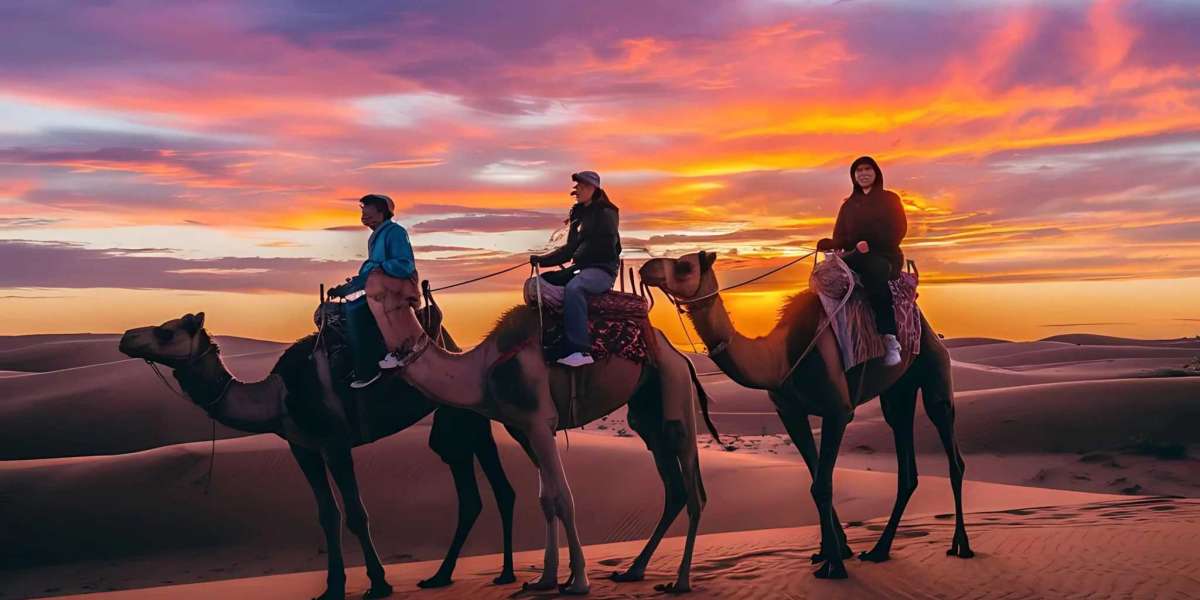Amidst the towering skyscrapers and modern architecture of Abu Dhabi lies a rich cultural heritage rooted in the sands of the Arabian Desert. At the heart of this heritage are the Bedouins – the desert-dwelling nomads whose way of life has shaped the culture and traditions of the United Arab Emirates. For centuries, the Bedouins navigated the vast, arid landscape of Abudhabi desert safari, relying on their resourcefulness, resilience, and deep connection to nature.
Today, while the UAE has transformed into a modern metropolis, the legacy of Bedouin life remains an integral part of Emirati identity. Visiting the desert on a cultural safari provides a unique opportunity to learn about the traditional lifestyle, values, and customs of the Bedouin people. From their nomadic lifestyle and ingenious survival techniques to their hospitality, music, and storytelling traditions, Bedouin culture offers a fascinating glimpse into the past.
In this article, we’ll explore the history of Bedouin life in Abu Dhabi’s desert, their unique way of living, cultural practices, and how you can experience this rich heritage firsthand during a desert safari.
The History of Bedouin Life in the Arabian Desert
The term “Bedouin” comes from the Arabic word “Badawi,” meaning “desert dweller.” Historically, the Bedouins were nomadic tribes who roamed the vast deserts of the Arabian Peninsula, including what is now known as Abu Dhabi. They lived in harmony with the harsh desert environment, moving from one oasis to another in search of water and grazing land for their livestock, mainly camels and goats.
For centuries, the Bedouins maintained a nomadic lifestyle, living in portable tents made of goat hair that provided shelter from the scorching sun and cold desert nights. These tents, known as “Bayt al Sha’ar,” were ingeniously designed to be easily dismantled and transported, reflecting the Bedouins’ adaptability and mobility.
Despite the challenges posed by the desert’s extreme climate, the Bedouins developed remarkable survival skills, relying on their knowledge of the land, stars, and weather patterns. They were skilled navigators who used the stars to guide their journeys across the vast, featureless desert landscape.
With the discovery of oil in the mid-20th century, the Bedouins gradually transitioned from a nomadic lifestyle to a more settled way of life. However, their traditions, values, and cultural practices have been preserved and continue to influence modern Emirati society.
Bedouin Lifestyle and Survival in the Desert
The Bedouins’ lifestyle was shaped by the harsh desert environment, requiring them to develop unique survival techniques and a deep respect for nature. Their way of life was centered around mobility, resourcefulness, and self-sufficiency.
- Nomadic Living and Shelter
As nomads, the Bedouins moved frequently in search of water and pasture for their animals. Their tents, or Bayt al Sha’ar, were made from woven goat hair, which was ideal for the desert climate. The fabric was breathable, allowing air circulation during the day while providing insulation at night. It was also water-resistant, offering protection from the occasional desert rain.
Inside the tent, the living space was divided into sections, with a communal area for receiving guests and a private area for the family. The interior was decorated with woven carpets, cushions, and colorful textiles, creating a cozy and comfortable environment.
- Camels – The Ship of the Desert
Camels were essential to Bedouin life, providing transportation, milk, meat, and even clothing from their hides. Known as the “ships of the desert,” camels were perfectly adapted to the harsh desert conditions. They could travel long distances without water, carry heavy loads, and withstand the extreme heat.
Bedouins shared a special bond with their camels, considering them valuable companions and symbols of wealth and status. Camel racing and beauty contests are still popular in the UAE today, celebrating the cultural significance of this remarkable animal.
- Food and Cuisine
The Bedouins’ diet was simple yet nutritious, consisting mainly of dates, dairy products (such as camel milk and yogurt), and meat from their livestock. Dates were a staple food, valued for their high nutritional content and long shelf life, making them ideal for desert travel.
Traditional dishes included “Harees” (a slow-cooked wheat and meat porridge) and “Machboos” (a spiced rice dish with meat or fish). Bedouin cuisine was flavored with aromatic spices such as saffron, cardamom, and cinnamon, reflecting the influence of ancient trade routes.
- Water Conservation and Survival Techniques
Water was a precious resource in the desert, and the Bedouins developed ingenious methods of finding and conserving it. They relied on natural springs and wells, known as “Aflaj,” which were carefully maintained to ensure a continuous water supply.
To conserve water, the Bedouins practiced minimal consumption, using water sparingly for drinking and cooking. They also adapted their clothing to the desert climate, wearing loose-fitting garments that provided protection from the sun while maintaining ventilation.
Cultural Practices and Traditions
The Bedouins are known for their rich cultural heritage, which is deeply rooted in oral traditions, music, poetry, and hospitality. Their customs and social values reflect a close-knit community built on honor, loyalty, and generosity.
- Poetry and Storytelling
Poetry was an essential part of Bedouin culture, serving as a means of communication, entertainment, and historical documentation. Known as “Nabati” poetry, these oral compositions celebrated heroism, love, and the beauty of the desert landscape.
Storytelling was another cherished tradition, with elders sharing tales of bravery, adventure, and wisdom around the campfire. These narratives preserved the Bedouins’ history, values, and moral lessons, passing them down from generation to generation.
- Music and Dance
Music and dance were integral to Bedouin celebrations, reflecting the joy and vibrancy of their community. Traditional instruments included the “Rebab” (a stringed instrument) and the “Oud” (a lute-like instrument).
The Al-Ayyala dance is a traditional Bedouin performance that involves synchronized movements with bamboo sticks, accompanied by rhythmic drumming and chanting. It symbolizes unity and strength, and is still performed during national celebrations and cultural festivals in the UAE.
- Bedouin Hospitality
Bedouin hospitality is legendary, reflecting a deep-seated tradition of generosity and respect for guests. Visitors are welcomed with Arabic coffee (Gahwa) and fresh dates as a gesture of hospitality and friendship.
Hosting guests was considered a sacred duty, with the Bedouins going to great lengths to provide comfort and sustenance, even in the harsh desert environment. This tradition of hospitality remains a cornerstone of Emirati culture today.
Experiencing Bedouin Culture in Abu Dhabi’s Desert Safari
To experience the rich cultural heritage of the Bedouins, visitors can embark on a desert safari in Abu Dhabi. These cultural tours provide a unique opportunity to learn about traditional Bedouin life through authentic experiences such as:
- Visiting a replica Bedouin camp to see traditional tents and handicrafts.
- Enjoying camel rides and learning about the cultural significance of camels.
- Participating in cultural activities like henna painting and falconry demonstrations.
- Experiencing traditional Arabian entertainment, including music, dance, and storytelling.
Final Thoughts
The legacy of Bedouin life is deeply woven into the cultural fabric of Abu Dhabi and the wider Arabian Peninsula. Despite the rapid modernization of the UAE, the values, traditions, and resilience of the Bedouin people continue to influence Emirati society.
Exploring Bedouin culture in Abu Dhabi’s desert offers a profound appreciation for the simplicity, wisdom, and strength of a people who thrived in one of the world’s harshest environments. It’s a journey into the past that enriches the present, connecting visitors to the spirit of the Arabian Desert.








